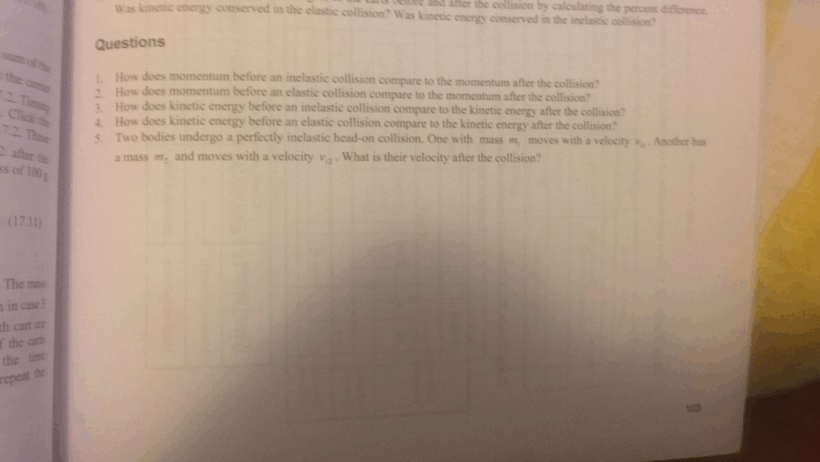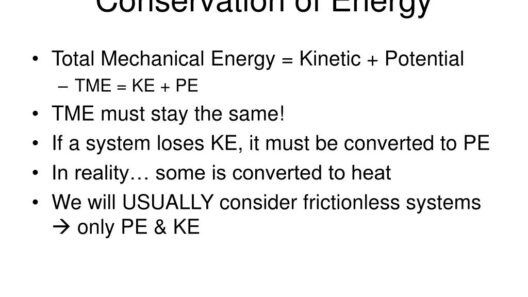In the realm of physics, the discourse surrounding energy conservation often evokes a tapestry woven with intricate principles and vivid imagery. Within this tapestry, kinetic energy occupies a central role, particularly within the fascinating scenario of superelastic collisions. To grasp the nuance of this phenomenon, one must first delineate the parameters that govern both traditional and superelastic collisions.
At its core, a kinetic energy collision is comparable to a dance between two celestial bodies, each orbiting a shared gravitational pull. The dancers, representing masses in motion, engage in a dramatic interplay characterized by momentum and energy transfer. In an elastic collision, akin to a perfectly choreographed waltz, the total kinetic energy before the collision remains equal to the total kinetic energy after. However, as one delves deeper, the narrative shifts with the introduction of superelastic collisions, where the rules of this grand performance undergo a remarkable transformation.
Superelastic collisions are an extraordinary spectacle wherein two bodies, upon colliding, not only conserve their collective momentum but also demonstrate a unique enhancement of kinetic energy post-collision. This phenomenon is reminiscent of a magician pulling a rabbit from a hat; the kinetic energy seems to emerge from nowhere, defying the conventional expectations of our established understanding. Physics has established that during a superelastic collision—most commonly observed in the collisions of certain types of particles—some potential energy is transformed into kinetic energy. Thus, there is a net increase in the kinetic energy of the system.
To further elaborate, consider the essence of potential energy as a latent reservoir—much like water held behind a dam. When the dam suddenly releases, that potential energy cascades into kinetic energy, propelling the water downstream with newfound vigor. In a similar vein, certain elastic materials, when deformed, store energy. Upon colliding with another object, this stored potential energy can be released, contributing to an amplified result in kinetic energy. The juxtaposition of stored potential energy and the resulting kinetic energy after impact creates an exhilarating dynamic that challenges our preconceived notions of conservation.
One might inquire, how does this principle apply to real-world scenarios? The implications of superelastic collisions reach far and wide—from molecular interactions and atomic particles to the grand design of celestial mechanics. For instance, in particle physics, when colliding particles possess sufficient energy, new particles can emerge from the collision, showcasing the transformation of potential energy into kinetic energy. This principle underlines the complexity and elegance of the universe, revealing how energy iterates through its forms while abiding by various conservation laws.
The exploration of superelastic collisions revels in myriad examples. Consider the collision of rubber balls tossed together at the right angle of impact. Their interaction is illustrative; the squishy exterior compresses upon collision, storing potential energy, which is then released as kinetic energy during the rebound. The superelastic nature of certain materials amplifies this rebound, leading to a bounce higher than the initial drop—a delightful spectacle that echoes the charm of revelatory physics in a seemingly mundane reality.
Moreover, in the domain of mechanical engineering, the interpretation of superelasticity has given rise to sophisticated technologies. Superelastic alloys, such as nickel-titanium, exhibit remarkable deformation capabilities without permanent distortion, making them ideal for various applications, including robotics and medical devices. Here, the transformational prowess of maxed-out states of energy conservation presents exciting possibilities in design and functionality, illustrating how physics informs engineering innovation and enhances our daily lives.
However, it is essential to analyze the constraints and limitations surrounding superelastic collisions. While these events embellish the narrative of energy conservation with spectacular instances of energy amplification, they do not universally apply to all forms of interactions. Real-life friction, air resistance, and inelastic properties can strip the idealism from this beautiful dance. Consequently, the conditions under which superelastic collisions occur must be rigorously observed, and the potential constraints understood. Thus, while kinetic energy can be remarkable in its transformations, the understanding of energy conservation fosters a critical view of realism in scenarios outside of ideal conditions.
In conclusion, the question, “Is kinetic energy conserved in a superelastic collision?” unveils a profound exploration of energy dynamics that transcends mere academic curiosity. The answer is both an affirmation of energy conservation and a celebration of energy transformation. Superelastic collisions stand as a testament to the versatility and resilience of energy, akin to a dynamic ballet that engages in intricate choreography, creating a thread of connection between the potential and the kinetic. By embracing these phenomena, one gains insight not only into the mechanics of our physical world but also into the fundamental laws that govern it. Such insights compel us to reflect on our interactions with energy, urging a deeper engagement with the principles that influence our universe and the technological marvels it inspires. As we continue to interrogate and elucidate these interactions, our understanding will become as fluid and dynamic as the energy of the cosmos itself.







